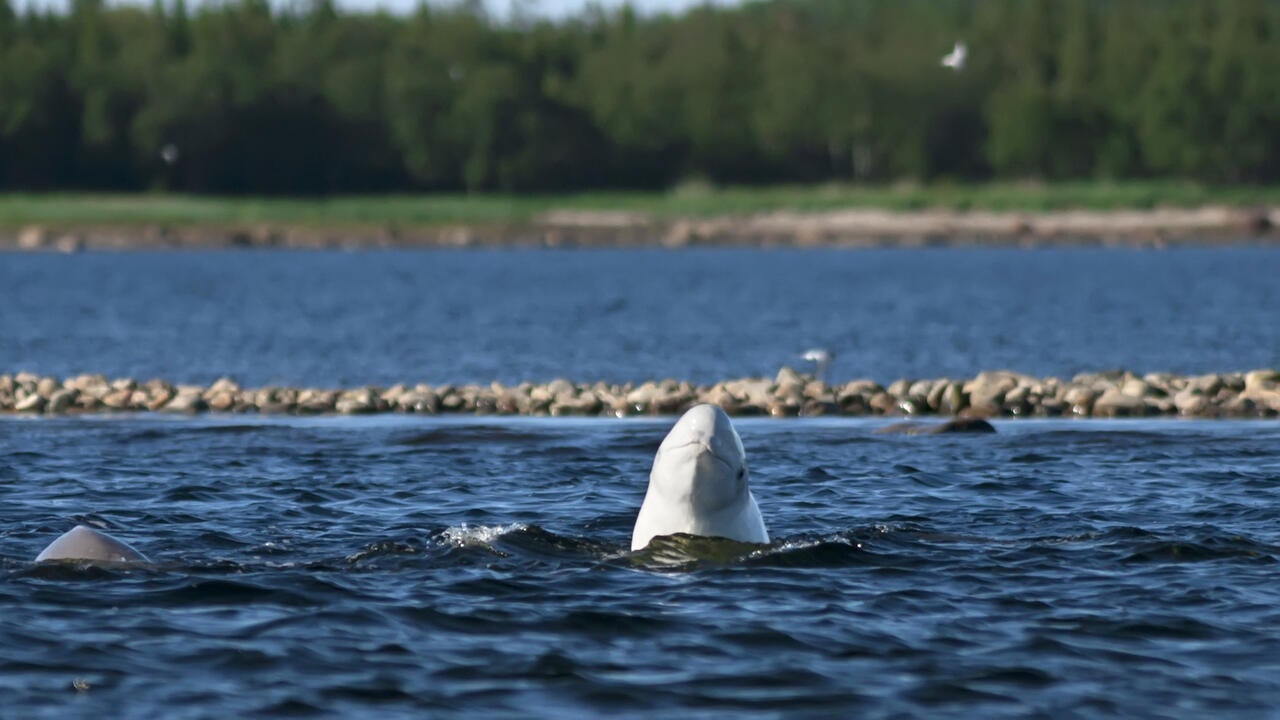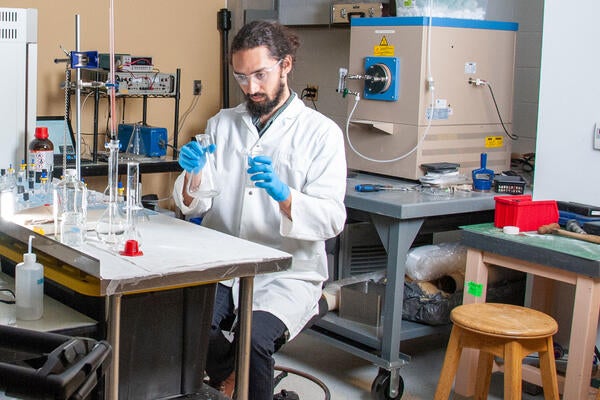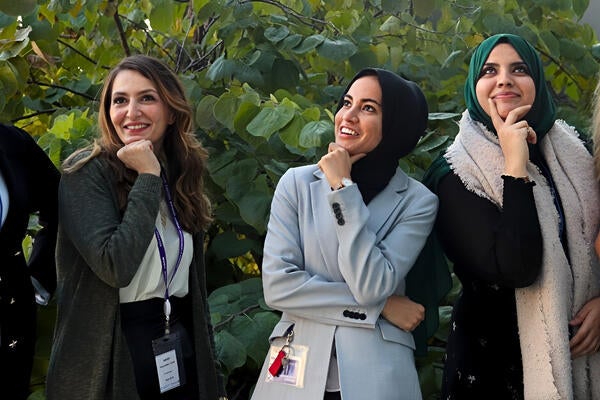
Can AI help save beluga whales?
Waterloo Engineering's Vision and Image Processing Research Lab partners with Fisheries and Oceans Canada to boost whale-spotting efficiency with machine learning

Waterloo Engineering's Vision and Image Processing Research Lab partners with Fisheries and Oceans Canada to boost whale-spotting efficiency with machine learning
By Val Maloney Faculty of EngineeringBeluga whale populations in the Arctic are under threat due to increased on- and off-shore activities such as oil and gas development and climate change.
Aerial surveys capture images over breeding and feeding regions and this is the most popular non-invasive approach for monitoring the populations of beluga whales and ensuring their distribution and health status. Visual analysis of the thousands of large-scale and highly detailed images performed by the human eye is labour-intensive, time-consuming and prone to error because the whales are quite small, extending only a few pixels, and often obscured by imaging artefacts.
Dr. Marianne Marcoux, research scientist at Fisheries and Oceans Canada and adjunct professor at the University of Manitoba, has been monitoring beluga whales with her team and needed a more efficient solution for tracking them.
“The problems with finding and counting beluga whales are numerous,” Marcoux says. “We only have the summer months to track them, can only track them when they aren’t deep diving, and the whales tend to swim together which makes counting by the human eye even more difficult. Everybody kept telling me there must be a better way.”
Marcoux stumbled upon a better way when she read about a team of researchers from the University of Waterloo’s Vision and Image Processing Research Lab (VIP Lab) and their work with cancer cells.
The VIP Lab team conducts remote sensing research to design more effective automated extraction algorithms for interpreting detailed remote sensing imagery. Simply put, they use artificial intelligence (AI) to analyze digital images and identify a specified subject — such as beluga whales — with speed and accuracy.

Caption (left to right): Dr. David Clausi, Muhammed Patel and Dr. Linlin Xu reviewing an image from the beluga whale research.
Marcoux contacted lab co-director Dr. David Clausi, who is a systems design engineering professor in Waterloo Engineering and proposed working together to improve how the beluga whale population is tracked and monitored. Excited by such a project, the VIP Lab team jumped at the opportunity to get involved by feeding an algorithm images of beluga whales to train it for accurate identification.
Clausi worked with Dr. Linlin Xu, research assistant professor in systems design engineering, and Muhammed Patel, a master’s student, to develop an AI-based algorithm that can identify areas within large-scale images that are likely to contain beluga whales and highlight those areas in square boxes. This first step reduces the volume of work for further analysis significantly.
“Our system cut out about 95 per cent of the remote sensing images taken during aerial surveys,” Patel says. “In other words, only 5 per cent of the images contained beluga whales. That’s a huge reduction in material for analysis, helping the researchers focus on the photos that matter to their work.”
What’s more, the system did the work in record time.
“It used to take Marcoux and her team a whole year to analyze the imagery,” Xu says. “With AI assistance, the researchers completed their image analysis in one summer. As we continue to train the algorithm and it gets smarter, we’ll cut that time down to eight hours.”
"Our collaboration with the VIP Lab has allowed us to develop an open-source tool that will help with the study and conservation of not only belugas but many other marine mammal species," said Marcoux of the impact of the collaboration with the Waterloo Engineering group.
Clausi says projects like this one showcase the expertise of the VIP Lab’s graduate students and faculty, helping to propel Waterloo to first in Canada and 37th globally in remote sensing research, according to the 2023 Shanghai Academic Ranking of World Universities.
Learn more about the Vision and Image Processing Research Lab (VIP) here.
Interested in graduate and PhD studies at the University of Waterloo? Discover more about the options within the Faculty of Engineering here.

Read more
From fossil fuels to future fuels, Aqua-Cell Energy's saltwater battery sets the stage for sustainable energy storage

Read more
Teams of engineering students competed for investments in their fourth-year design projects

Read more
This International Woman’s Day, Waterloo Engineering celebrates a professor’s commitment to preparing all her students for a complex world
The University of Waterloo acknowledges that much of our work takes place on the traditional territory of the Neutral, Anishinaabeg and Haudenosaunee peoples. Our main campus is situated on the Haldimand Tract, the land granted to the Six Nations that includes six miles on each side of the Grand River. Our active work toward reconciliation takes place across our campuses through research, learning, teaching, and community building, and is co-ordinated within the Office of Indigenous Relations.